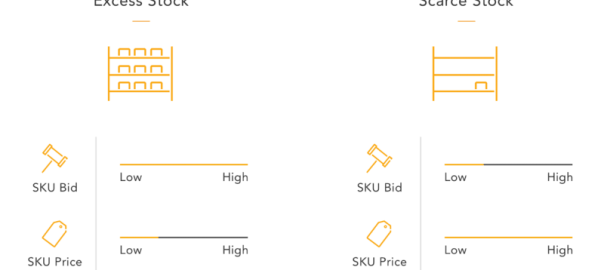Want to improve your e-commerce sales? Columnist Andreas Reiffen makes the case for data sharing across marketing channels to avoid lost revenue and wasted ad spend.

In general, e-commerce retail can be thought of in three main parts: customer acquisition, conversion and retention/measurement.
- Customer acquisition is what the majority of digital marketers are concerned with. It’s all the different product advertising efforts across all digital channels that lead a customer to discover your products.
- Conversion is about getting the customer to make a purchase. To a certain extent, this is about the experience your website presents a customer, but mostly it’s about whether you have the product the customer wants to buy and are you selling it at a price they are willing to pay. Conversion, therefore, has a lot to do with your price and inventory management.
- Retention and measurement are about how much each new customer is worth to your business — i.e., how many purchases are they likely to make. This means integrating your CRM (Customer Relationship Management) and ERP (Enterprise Resource Planning) systems to make sure you are getting the maximum profit from your customers for your advertising spend.
Each of these three pieces of the tripod is equally important in order to have a successful business, and each one collects an incredible amount of data. Unfortunately, in the majority of companies, that data remains siloed within the team that collected it. Data is not being fed back into other parts of the marketing machine; as a result, revenue is being lost and ad spend is wasted.
I believe that in order to create a truly optimized marketing process, retailers need to integrate their product advertising efforts with inventory management and price competitiveness.
Let’s look at what can be achieved by breaking down these marketing silos.
Product advertising and price management
I’ve talked before about how if you fail at pricing, you’ll fail at product advertising. What this means is that Google (and other PLA networks) include price competitiveness as an algorithmic signal. According to our research, lower-priced products generate 4x more conversions than expensive products.
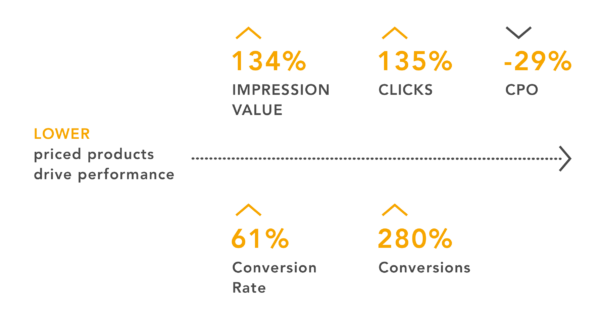
If your product’s price is above the average, it’s virtually impossible for you to reach position one, no matter how high you raise your CPC (cost per click) bid. Therefore, bidding higher (or at all in some cases) on products that are not priced competitively is a complete waste of money.
The key takeaway here is to not waste your advertising budget bidding aggressively on overpriced products. Instead, use product advertising performance as a way to test the price elasticity of your products. Play around with raising and lowering prices to find out where the optimum conversion level is.
Even if you can’t change your products, you should at the very least be using pricing data to inform your product advertising strategy. Focus your ad spend on those products that are competitively priced, and use them as a gateway to your website.
Product advertising and inventory management
Data silos and misaligned metrics between the advertising and merchandising departments can cause retailers to waste significant amounts of money.
In many organizations, excess budget is allocated to products that quickly run out of stock, rather than products that really need an advertising push to sell out. In fact, according to our research, around 40 percent of ad budgets are spent on products that will run out of stock within three weeks. On the flip side, only 21 percent of budgets are allocated to products that won’t sell out within three months.
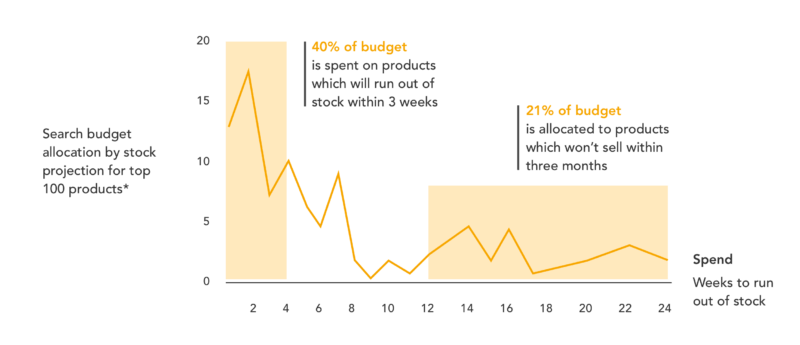
The way I see it, there’s no sense in wasting money on products which will run out of stock anyway. Instead, PLA (product listing ads) budgets should be used to add market pressure to slow-moving stock that would benefit from additional support.
Using feed advertising systems and an advanced product advertising tool, you can use inventory to direct product ad investment based on your sell-through rate and stock level.
Product advertising and CRM/ERP
One reason too much ad spend is going toward products which would sell anyway is that digital marketers are focused on improving ROAS (return on ad spend). This ROAS model of measuring search marketing simply doesn’t work.
ROAS-based models focus on whether your advertising is efficient but ignore if that’s the most effective way of growing your business. ROAS is all about winning that impression, click or customer engagement, but it doesn’t take into account the ultimate business measurements of profitability, margins and new customer acquisition.
Instead, businesses should think more in terms of CRM and ERP. The big question is how much you should spend on all your advertising channels in order to achieve your total long-term revenue goals.
Our research shows that when advertisers focus on long-term revenue goals, they make about 5 percent more revenue in the first year than when they focus on short-term goals like ROAS.
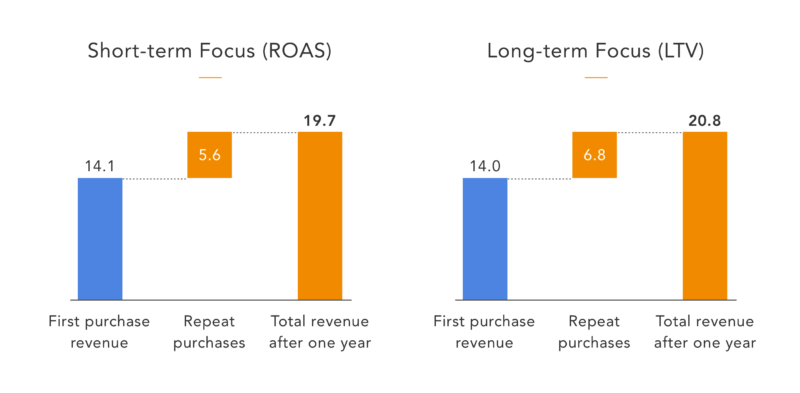
Instead of ROAS, you should be optimizing all your paid activities for CLV (Customer Lifetime Value), or how much profit you will make off a new customer over the course of a given time frame (usually one year). This is where CRM comes in. The more profit you can get out of a new customer, the more you can spend on advertising to them.
ERP systems will help you to understand the margins of the products you are selling. You want to sell more of the ultra-profitable products by bidding against specific margin levels.
Knowing customer lifetime value and profitability at the product level allows for improved paid media placement, intelligence in product pricing, and better inventory optimization.
Integrated marketing
It’s impossible to make smart decisions if you don’t understand each piece of the marketing trifecta and how it relates to the other parts. In retail organizations today, these are all separate functions, but by aligning these channels to operate in concert, your whole business remains focused on a single set of mutually beneficial and coordinated metrics.
For example, in order to effectively sell excess stock, bids should be high, while prices should be equal to or lower than your competition. At the same time, you can avoid spending too much ad money on products that will sell on their own or run out of stock by selling them at a high price to maximize yield and reducing your ad spend.
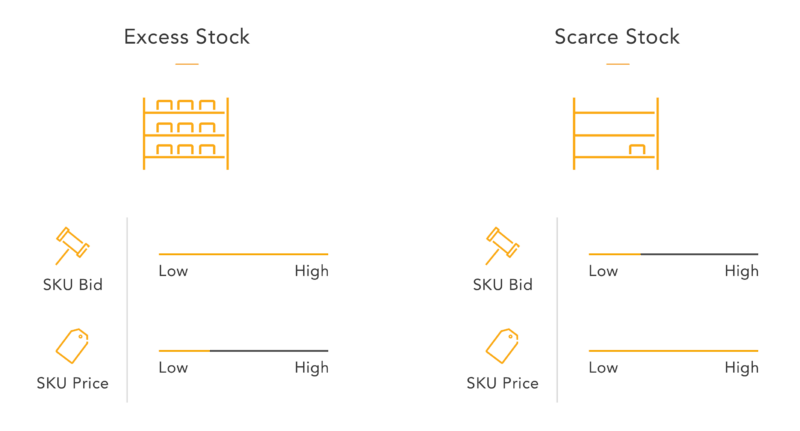
In addition, by maximizing your ad spend for long-term goals like CLV, margin and new customer acquisition, you can improve the entire business’s revenue and profitability.
Ultimately, profit-centric metrics should be the modern retailers’ success criteria. As a C-level executive, your goal should be to shift your business’s way of thinking so that you align e-commerce goals of new customer acquisition, CLV and margin tracking alongside paid search and shopping media spend in a way that is transparent, accountable and integrated with your data warehouse.
[Article on Search Engine Land.]
Some opinions expressed in this article may be those of a guest author and not necessarily Marketing Land. Staff authors are listed here.
Marketing Land – Internet Marketing News, Strategies & Tips
(94)
Report Post